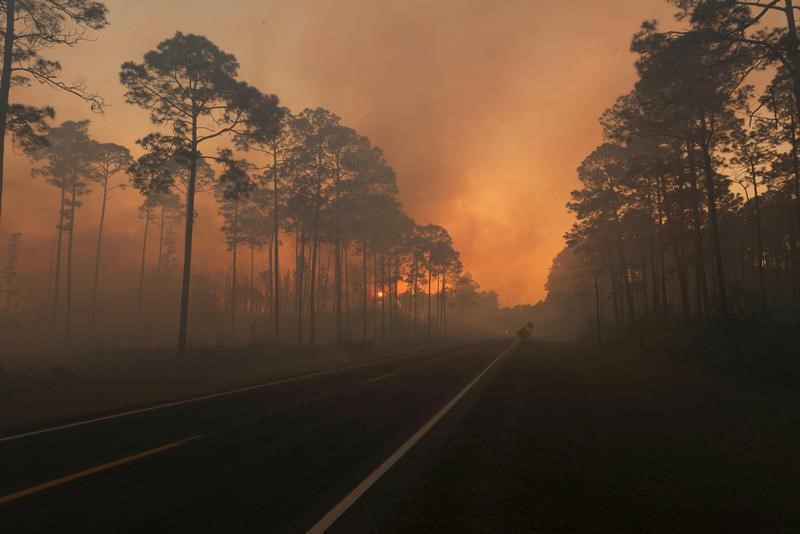By Bernie Woodall
(Reuters) – A wildfire in Georgia’s Okefenokee National Wildlife Refuge has forced dozens of nearby residents to leave their homes, authorities said on Sunday, adding the blaze might not be fully contained for months.
About 130,000 acres (52,600 hectares), or almost a third of the refuge, have already burned, said Melanie Banton, a spokeswoman for firefighters and park officials battling the West Mims Fire, which began on April 6.
The refuge, which is popular with tourists, is home to black bears, alligators and sandhill cranes.
The fire was only 12 percent contained as of Sunday afternoon and more than 500 people were fighting the blaze, according to fire information website InciWeb.
Most of the fire was within the refuge, which straddles Georgia’s southeast border with Florida, but it is encroaching on private land. No injuries have been reported.
A shelter has been set up in a gymnasium in Folkston, Georgia, for 79 residents in the tiny town of St. George, Georgia, who were told on Saturday to evacuate, Banton said.
“First Responders are NOT coming door to door, because they are fighting this approaching fire to try to save your homes,” the refuge said on its Facebook page.
Shifting winds have helped spread the fire, Banton said, adding it could take until November before the blaze is fully contained.

Smoke is seen during sunset as the West Mims fire burns in the Okefenokee National Wildlife Refuge, Georgia, U.S. in a photo released April 29, 2017. Fish and Wildlife Service/Mark Davis/Handout via REUTERS
Winds gusts of up to 25 miles per hour (40 kph) and low humidity boosted chances of the fire’s spreading on Sunday, according to a statement issued by forestry and firefighting officials.
“Anything that can burn will burn if a hot ember falls,” the statement said.
The fire burned into Florida last month and may advance into that state again, officials said on Sunday.
While much of the wildlife refuge is marshland and swamp, parts of it are prairie and wooded land.
Six years ago, a wildfire burned more than 300,000 acres (121,400 hectares) of the 407,000-acre (164,700-hectare) refuge, said Mark Davis, a spokesman for the U.S. Fish and Wildlife Service, which runs the refuge.
(Reporting by Bernie Woodall in Fort Lauderdale, Fla.; Additional reporting by Jon Herskovitz in Austin, Texas; Editing by Paul Simao and Peter Cooney)
 The West Mims fire burns in the Okefenokee National Wildlife Refuge, Georgia, U.S. April 25, 2017. Fish and Wildlife Service/Michael Lusk/Handout via REUTERS
The West Mims fire burns in the Okefenokee National Wildlife Refuge, Georgia, U.S. April 25, 2017. Fish and Wildlife Service/Michael Lusk/Handout via REUTERS
